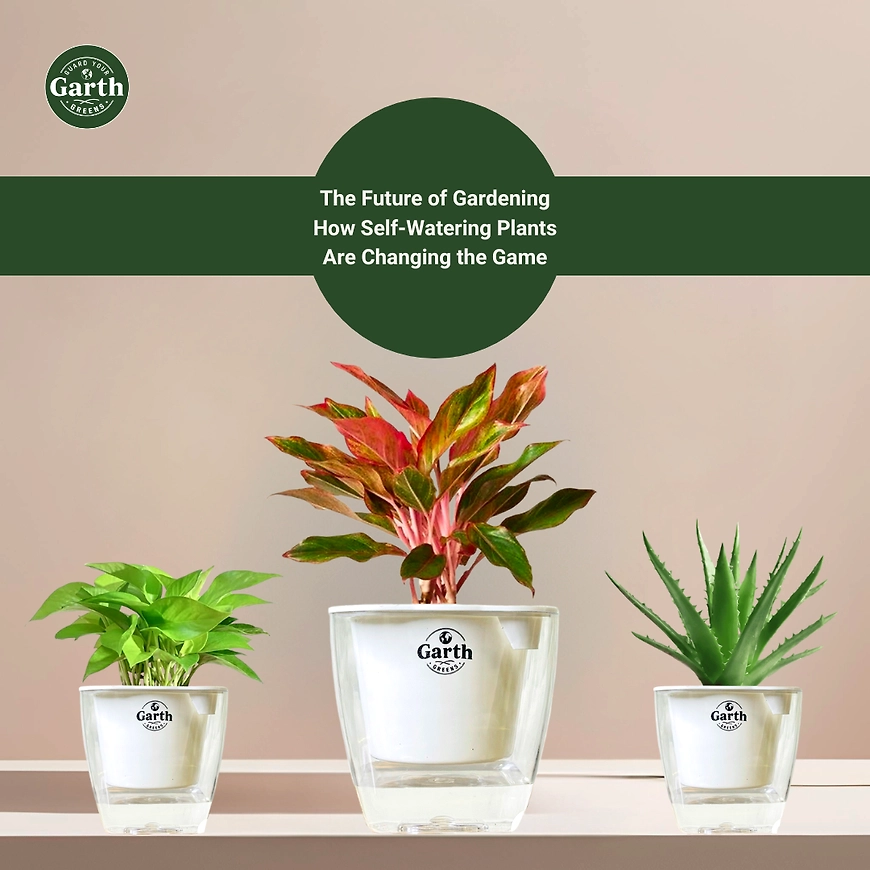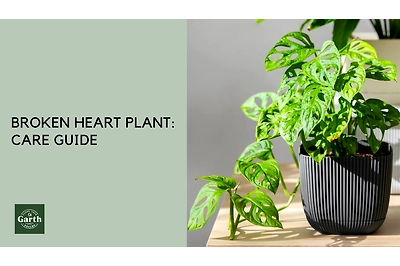The Future of Gardening: How Self-Watering Plants Are Changing the Game
- 15 Nov, 2024

Gardening is evolving, and today, self-watering plants are leading the way, offering an innovative solution for both novice and seasoned gardeners. This exciting advancement makes plant care more accessible, convenient, and efficient, allowing people to enjoy the benefits of gardening without the stress of daily watering. Whether you’re a busy professional or simply lack a green thumb, self-watering plants are here to change the game.
What Are Self-Watering Plants?
Self-watering plants, often grown in self-watering pots or systems, are designed to regulate their water intake from a built-in reservoir. These systems allow the plant to absorb water through capillary action, drawing just the right amount from the reservoir into the soil as needed. This means plants are always hydrated without the risk of over- or under-watering, giving them a consistent and healthy growth environment.
The Benefits of Self-Watering Plants
Here’s why self-watering plants are a perfect solution for modern gardeners:
1. Low Maintenance, High Reward
For those with a busy lifestyle, self-watering plants offer the perfect balance of beauty and convenience. With these systems, you don’t need to remember to water your plants daily; many reservoirs only need refilling once every one to two weeks, depending on the plant and environment. This reduces daily upkeep, making it easier for even the busiest individuals to enjoy lush, healthy greenery at home.
2. Prevents Over-Watering and Root Rot
One of the most common challenges gardeners face is finding the right balance in watering. Over-watering is a leading cause of plant issues, including root rot. Self-watering systems help prevent over-watering by ensuring the plant only takes in what it needs. This creates an ideal moisture level in the soil, keeping roots healthy and minimizing the risk of fungal diseases.
3. Supports Consistent Growth
Self-watering plants have a steady supply of moisture, leading to more consistent growth. Since the plant doesn’t experience cycles of drought or waterlogging, it can grow more uniformly and develop strong, resilient roots. This consistent care makes self-watering plants ideal for those who want vibrant, thriving plants without constantly adjusting their watering routine.
4. Eco-Friendly Water Use
Self-watering systems are also an eco-friendly option because they reduce water waste. Traditional watering methods often lead to excess water draining away, which is inefficient. Self-watering containers conserve water by storing it in a reservoir and allowing only the necessary amount to reach the roots. This mindful water usage aligns well with sustainable gardening practices, making it a choice that’s good for plants and the planet.
5. Perfect for Indoor and Urban Gardening
For city dwellers and indoor gardeners, self-watering systems are a game-changer. Limited space, fluctuating light, and a busy lifestyle can make indoor gardening challenging. Self-watering containers simplify this by giving plants the hydration they need, even in compact spaces like apartments or offices. They’re also ideal for outdoor balcony gardens, where you might not have the time to water frequently.
Self-watering plants have revolutionized gardening by offering a convenient and efficient solution for plant care. With a wide range of watering plant pots and systems available, even novice gardeners can easily maintain thriving greenery. These systems simplify plant care by allowing plants to draw water as needed, preventing both over- and under-watering. Understanding how watering planters work is key to their effectiveness. The built-in reservoir stores water, which the plant gradually absorbs through capillary action, ensuring consistent hydration. This creates an ideal environment for healthy root growth and reduces the risk of root rot. By incorporating self-watering plants into your indoor or outdoor space, you can enjoy a lush, low-maintenance garden with minimal effort.
Popular Plants That Thrive in Self-Watering Systems
While many plants can adapt to self-watering setups, some particularly thrive in them. Here are a few you might consider:
- Spider Plant – Known for its air-purifying qualities, the spider plant is low-maintenance and adapts well to self-watering pots.
- Peace Lily – This popular indoor plant enjoys consistently moist soil, making it ideal for self-watering.
- Pothos – Hardy and fast-growing, pothos plants flourish in self-watering systems, where their roots can drink up as needed.
- Fiddle Leaf Fig – With steady moisture, this beautiful plant can grow steadily without the risk of root rot from inconsistent watering.
How to Get Started with Self-Watering Plants
- Choose the Right Container – Select a self-watering pot with a built-in reservoir or use a DIY self-watering setup.
- Select Compatible Plants – While most plants can adapt to self-watering, research to find varieties that thrive with consistent moisture.
- Maintain the Reservoir – Fill the water reservoir as needed, usually every one to two weeks, depending on the plant’s water consumption.
- Monitor and Adjust – Although self-watering is low-maintenance, occasional monitoring ensures plants are healthy, especially as seasons and humidity levels change.
Conclusion
Self-watering plants represent the future of gardening, making it easier for everyone to enjoy the beauty and benefits of greenery. They offer a practical, sustainable, and efficient way to nurture plants, especially for those with busy schedules or limited gardening experience. Embracing this technology lets you focus on enjoying your plants rather than worrying about watering schedules.
Ready to bring self-watering plants into your home? Visit Garth Greens to explore options that suit your lifestyle and start enjoying a low-maintenance, high-reward gardening experience today!


